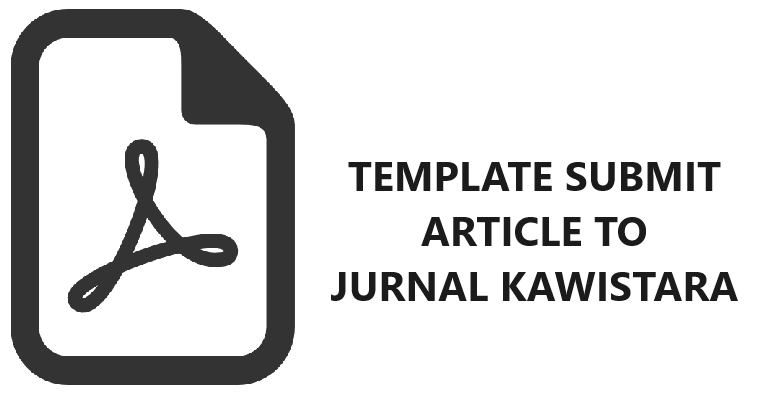Pola tanam dan pendapatan petani hutan rakyat di region atas Kabupaten Ciamis
Budiman Achmad(1*), Ris Hadi Purwanto,(2), Sambas Sabarnurdin(3), Sumardi Sumardi(4)
(1)
(2) Fakultas Kehutanan Universitas Gadjah Mada
(3) Fakultas Kehutanan Universitas Gadjah Mada
(4) Fakultas Kehutanan Universitas Gadjah Mada
(*) Corresponding Author
Abstract
This study aims to identify the forms of planting pattern developed by farmers in the upper region, business feasibility, the revenue contribution, and to provide some prospective choices of planting pattern that bring high revenue. The study was conducted in May until July 2010 in Ciomas Village, Panjalu District. Data was collected through interviews with using questionnaire, field observation and compilation of related documents. Respondents were selected purposively of twenty agroforestry farmers. The business feasibility was evaluated by using financial analysis, whereas to determine the revenue contribution from household was evaluated by calculating all of the income resources. The result is (1) the prospective planting pattern on land >1ha is planting pattern number 2 with IRR of 38.01 (wood + plantation + fruit + drugs + food), (2) on land between 0.5 to 1ha is planting pattern number 1 with IRR of 47.18 (wood + plantation + fruit + drugs), (3) on land <0.5 ha is planting pattern number 3 with IRR of 32.47 (wood + fruit + drug). The sequences of planting pattern which have the highest revenue to the smallest revenue contribution in a row are the planting pattern number 1 for 33.30%, number 3 for 28.09%, and number 2 for 25.22%. If all farmers in the upper region adopt planting patterns number 1, then the average revenue from private forest will increase to IDR 2,578,389 /ha to IDR 11,990,834 /ha.
Keywords
Full Text:
PDF (Bahasa Indonesia)References
Afriantho, G. 2008. “Prospek Kontribusi Hutan Rakyat terhadap Pendapatan Asli Daerah (PAD) Kabupaten Bogor (Studi Kasus Hutan Rakyat di Kecamatan Nanggung)”. Skripsi IPB.
Azam-Ali, S.N., R.C.N.Rao, J.Craigon, KDR.Wadia, dan J.H.Williams. 1993. “A method for calculating the population/yield relation of grandnut (Arachis hypogaea L) in semi-arid climates.” The Journal of Agricultural Science, 121:213-222. Diakses pada tanggal 29 Mei 2015. (https://doi.org/10.1017/S002185960007708X).
Asosiasi Petani Kapol. 2013. Analisis Usaha Kapol. Asosiasi Petani Kapol Kabupaten Ciamis. Jawa Barat: Dinas Petanian Tanaman Pangan. Ciamis.
Dinas Pertanian Tanaman Pangan. 2011.Standar Operasional Prosedur (SOP)Kapulaga Kabupaten Ciamis. Pemerintah Kabupaten Ciamis. Direktorat Jenderal Hortikultura Kementerian Pertanian. Ciamis.
FAO. 2013. Factors Affecting Forest Plantation Productivity. FAO Corporate Document Repository. Diakses pada tanggal 30 Mei 2015. (http://www. fao.org/docrep/005/ac601e/ac601e03.htm).
Falah NR. 2008. “Budidaya Kapulaga.”Online. Diakses pada tanggal 13 September 2011. (http://www.jahidinjayawinata61. files. wordpress.com/.../budidayakapulaga.doc).
Gittinger JP. 1982. Economic Analysis of Agricultural Projects. Edisi Kedua. The Economic Development Institute of the World Bank. Baltimore and London: The Johns Hopkins University Press.
Hardjanto, 2012. “Kontribusi Hutan Rakyat Terhadap Pendapatan Rumah Tangga di Sub Das Cimanuk Hulu.” fORCI Development. IPB.Diakses pada tanggal 29 Mei 2015. (http://forcidev.org/2012/10/09/kontribusi-hutan-rakyat-terhadappendapatan-rumah-tangga-di-subdas-cimanuk-hulu/).
Hooper DU., FS Chapin, JJ Ewel, A Hector,P Inchausti, S Lavorel, JH Lawton,DM Lodge, M Loreau, S Naeem,B Schmid, H Setala, AJ Symstad,J Vandermeer, dan AA Wardle.2005. “Effects of Biodiversity on ecosystem functioning : a consensus of current knowledge.”Ecological Monographs,75(1):3–35.Diakses pada tanggal 29 Mei 2015. (http://lib.gen.in/next/MTAuMTg5MC8wNC0wOTIy/hooper2005.pdf).
Prasetyo. 2004. “Budidaya Kapulaga sebagai tanaman sela pada tegakan sengon.”Jurnal Ilmu-ilmu Pertanian Indonesia,6(1):22-31.
Rasekh H, J. Asghari, M.N. Safarzadeh wishkai, S.L. Massoumi and R.Zakerinejad. 2010. “Effect of Planting Pattern and Plant Density on Physiological Characteristics and Yield of Peanut (Arachis hypogaea L.) in Iran.” Research Journal of Biological Sciences, 5(8):542-547.
Sharma R, E Sharma, AN Puroit. 1997.“Cardamom, mandarin and nitrogen-fixing trees in agroforestry systems in India’s Himalayan region.I. Litterfali and decomposition.”Agroforest Syst 35: 239-253.
Wilkinson K.M., Craig R. Elevitch, 2000.“Integrating understory crops with tree crops. An introductory guide for Pacific Island. Agroforestry Guides for Pacific Islands.” Permanent Agriculture Resources. Holualua. USA.Diakses pada tanggal 30 Mei 2015.(http://sci-hub.org/downloads/b332/10.0000 @agroforestry.net@generic-6BC90B081C23.pdf).
Article Metrics
Refbacks
- There are currently no refbacks.
Copyright (c) 2017 Jurnal Kawistara

This work is licensed under a Creative Commons Attribution-ShareAlike 4.0 International License.
Jurnal Kawistara is published by the Graduate School, Universitas Gadjah Mada.











